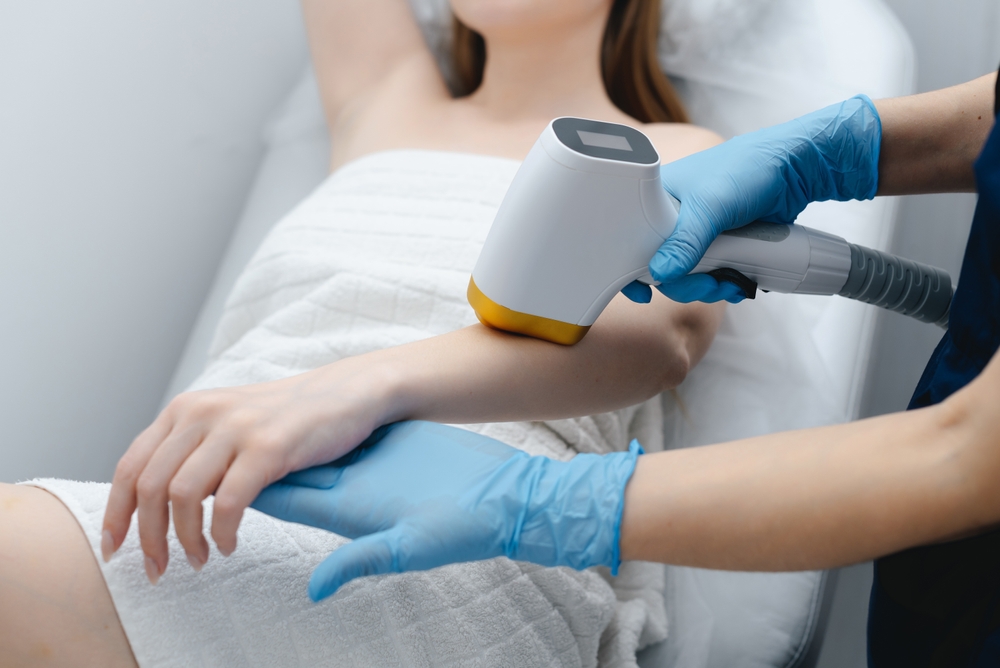Laser Skin Therapy and How Clinics in the US Are Using Them
Laser skin treatments are widely used in the US to address common skin concerns such as pigmentation, scarring, and signs of aging. Understanding how these treatments work and what clinics typically offer can help individuals make informed decisions about their skincare.

How do laser skin treatments work?
Laser skin treatments work by delivering concentrated beams of light energy to specific layers of the skin. This light energy is absorbed by target cells, such as pigment-producing melanocytes or collagen fibers, causing controlled damage. The body’s natural healing response then kicks in, stimulating the production of new, healthy skin cells and collagen. Different types of lasers emit various wavelengths of light, allowing practitioners to target specific skin concerns with precision.
What types of laser treatments are available in US clinics?
US clinics offer a diverse array of laser treatments to address various skin concerns:
-
Ablative lasers: These remove the top layer of skin, ideal for treating deep wrinkles and scars.
-
Non-ablative lasers: Less invasive, these penetrate deeper layers without damaging the surface.
-
Fractional lasers: These create microscopic treatment zones, promoting faster healing.
-
IPL (Intense Pulsed Light): Though not technically a laser, IPL uses broad-spectrum light to treat pigmentation issues and redness.
-
Q-switched lasers: Specifically designed for tattoo removal and pigmented lesions.
-
Pulsed dye lasers: Effective for vascular conditions like rosacea and port wine stains.
What skin conditions can laser treatments address?
Laser skin treatments can effectively target a wide range of skin concerns:
-
Fine lines and wrinkles
-
Acne scars and other types of scarring
-
Hyperpigmentation, including age spots and melasma
-
Uneven skin texture and tone
-
Enlarged pores
-
Vascular lesions, such as spider veins and rosacea
-
Unwanted hair
-
Tattoo removal
-
Acne and acne-related inflammation
-
Sun damage and photoaging
What should patients expect during a laser treatment session?
A typical laser treatment session begins with a thorough cleansing of the skin. The practitioner may apply a topical numbing cream to minimize discomfort, especially for more intensive treatments. Protective eyewear is provided to shield the eyes from the laser light. During the procedure, patients may experience sensations ranging from mild warmth to a snapping feeling, depending on the type of laser used and the treatment area.
Sessions can last anywhere from 15 minutes to over an hour, depending on the size of the treatment area and the specific procedure. After the treatment, the skin may appear red and feel sensitive, similar to a sunburn. The practitioner will provide post-treatment care instructions, which may include applying soothing creams and avoiding sun exposure.
What are the latest advancements in laser skin therapy in the US?
Recent advancements in laser skin therapy have focused on improving efficacy while reducing downtime and side effects. Some cutting-edge developments include:
-
Picosecond lasers: These ultra-short pulse lasers offer more precise targeting and faster results for pigmentation issues and tattoo removal.
-
Combination therapies: Clinics are increasingly using multiple laser types in a single session for enhanced results.
-
AI-assisted treatments: Some devices now incorporate artificial intelligence to optimize treatment parameters for individual patients.
-
Non-thermal lasers: These innovative lasers can treat skin concerns without generating heat, reducing the risk of thermal damage.
-
Home-use devices: While not as powerful as in-office treatments, FDA-approved at-home laser devices are gaining popularity for maintenance between professional sessions.
How much do laser skin treatments cost in US clinics?
The cost of laser skin treatments in the US can vary significantly based on factors such as the type of laser used, the size of the treatment area, and the number of sessions required. Here’s a general pricing guide for common laser treatments:
| Treatment Type | Average Cost per Session | Typical Number of Sessions |
|---|---|---|
| Ablative Laser Resurfacing | $1,500 - $3,000 | 1-2 |
| Non-ablative Laser | $300 - $1,000 | 3-5 |
| Fractional Laser | $800 - $2,000 | 3-5 |
| IPL | $300 - $600 | 3-6 |
| Tattoo Removal | $200 - $500 | 6-10 |
| Laser Hair Removal | $200 - $400 | 6-8 |
Prices, rates, or cost estimates mentioned in this article are based on the latest available information but may change over time. Independent research is advised before making financial decisions.
Laser skin treatments have become an integral part of modern dermatological care in the United States. As technology continues to advance, these treatments offer increasingly effective and personalized solutions for a wide range of skin concerns. While the cost and number of sessions required can vary, many patients find the results to be well worth the investment in their skin’s health and appearance.
This article is for informational purposes only and should not be considered medical advice. Please consult a qualified healthcare professional for personalized guidance and treatment.




